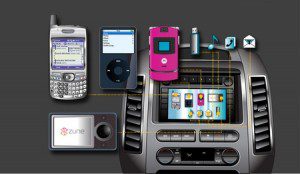 Improved technology improves safety, right? Especially when you’re talking about smart phones and other portable devices that move with you from home to car to office and back. Imagine you don’t need the smart phone because you have an electronic system in your car that connects you to Facebook, Twitter or other social networks; allows you to text, email, shop online, or look for directions. New technology, sure, but does it improve safety?
Improved technology improves safety, right? Especially when you’re talking about smart phones and other portable devices that move with you from home to car to office and back. Imagine you don’t need the smart phone because you have an electronic system in your car that connects you to Facebook, Twitter or other social networks; allows you to text, email, shop online, or look for directions. New technology, sure, but does it improve safety?
The federal Department of Transportation is working to make sure new technology doesn’t undermine safety as automakers bring these new technologies to the electronic systems in our cars and other vehicles.
At EndDD.org, we stress that it’s not only cell phones that distract drivers. Often, it’s another electronic device, such as a GPS or tablet, or, it’s a drink or sandwich; mascara or lipstick; or, the music from the car’s dashboard system. The federal Department of Transportation agrees, developing new voluntary guidelines for in-vehicle technologies – guidelines based on research and analysis from the National Highway Traffic Safety Administration (NHTSA).
For example, NHTSA is recommending to the carmakers that these new technologies demand limited attention from drivers – two seconds at a time and 12 seconds total of eyes off the road. The voluntary guidelines also recommend disabling texting, social media, and web browsing as well as video-based calling and conferencing unless a vehicle is stopped and in park. NHTSA has just released a new study concluding that visual and manual tasks by a driver triple the risk of a crash.
You can find the complete list of these new voluntary guidelines by clicking here.
We think these voluntary guidelines make a lot of sense and the carmakers should adopt them, just as they adopted seat belts and air bags to improve safety. It is imperative that as technology advances, safety advances too.





